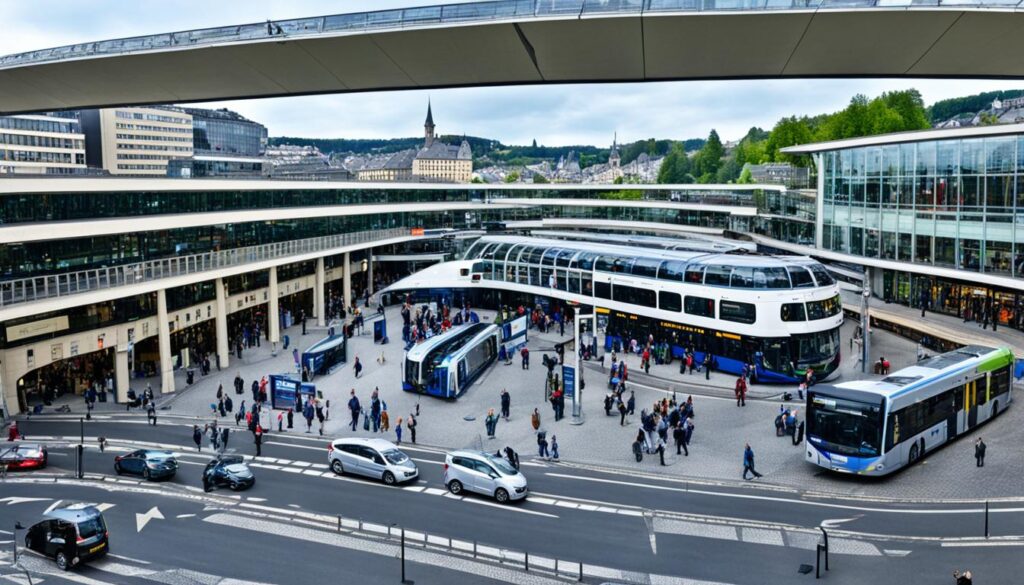In addition to picking up and dropping off passengers at bus terminals and off-street locations, the majority of buses make stops along the road for this reason. Most nations only bus stop bus at designated locations in urban areas, however some permit buses to stop anywhere, even on congested city streets. Whether or not bus stops need to be marked is mostly determined by usage. If there aren’t many passengers, it might not be necessary to invest in bus stop infrastructure. In a crowded bus, it is not feasible to let everyone get on and off at any moment. As a result, bus stops might be a few meters apart, which would increase travel times.
CONSENSUS
Where bus stops should be located depends on a number of considerations, including the convenience and safety of other road users as well as bus passengers. When selecting stops, it would be ideal for all stakeholders—including law enforcement, bus companies, highway authorities, and possibly passenger representatives—to consult with one another. Naturally, bus stops ought to be positioned in convenient areas close to where passengers wish to enter or get off buses and where doing so is secure. They should be placed at an area where it is safe for people to cross the street, preferably near a pedestrian crossing. They must, however, be positioned to lessen traffic bottlenecks and the danger that delayed buses or buses moving into or out of stops pose to other motorists.
However, if passengers are to board buses on intersecting routes, the buses should ideally stop within convenient walking distance of intersections. In residential developments, bus stops should be located where bus routes intersect pedestrian pathways that are separate from the road system. Additionally, bus stop distances must be properly evaluated. If stops are too far between, passengers will have to go farther. By wasting more time accelerating and decelerating, stops that are too close to one another, on the other hand, may needlessly slow down other traffic and prolong bus trips.
SPATIALITY
For city bus services, the optimal spacing between stops is frequently between 300 and 600 meters. However, while determining the precise locations, other considerations must also be made. Stops spaced at absolutely regular intervals will inevitably put some in awkward, unnecessary, or dangerous places.
ROUTES
In situations where many bus routes serve the same area, resulting in a high combined frequency, it may be necessary to provide separate stops for different destinations or groups of destinations. By doing this, traffic at bus stop bus that results from several buses loading simultaneously will be lessened. In general, if more than two buses to different destinations are loading at a stop concurrently each day, it will be advantageous to split the buses. Multiple routes should be grouped together to use the same stop when they serve the same intermediate destinations or travel a significant distance along a shared corridor. It is undesirable if passengers are given a choice of bus routes but are unable to decide which stop to embark.
Because the two markets are usually somewhat different, it is usually prudent to separate stops for standard and premium grade or air-conditioned buses, even if they are on the same route. This aspect is especially true at busy places. Problems may arise if buses with different configurations utilize the same bus stop, such as buses having doors in different places. When the bus stops, its entrance doors should be at the front of the queue. With its entrance at the front, a bus’s front should be at the head of the line when it stops.
However, if its entry is at the back, one should stop with its front anything up to 15 meters forward of this location. Needless to say, this impacts any parking limitations that Safety barriers are put up to prevent passengers from accessing the road other than at the front of the line, and they may obstruct the entrance or exit of a bus with several entrances or one with a clear entry and exit. If the conventional bus design is altered, it may be necessary to make modifications at each bus stop along the affected routes.
CLASSES
Parking at bus stops by vehicles other than buses need to be prohibited. This should be at least half a bus length on either side of the bus stop sign for the passengers’ convenience and to enable buses to pull into and off of the curb without hindering other vehicles.
REGULATION
Bus stop lay-bys are commonly provided to allow buses to stop out of the traffic stream and to keep stopped buses from disrupting other vehicles. On major highways, however, buses often have difficulty re-entering the traffic stream, particularly in situations where traffic is continuous. It is common for drivers to not pull all the way into the lay-by. This could be inconvenient for passengers, particularly if it rains a lot and the curbside gutters are overflowing.
Shelters for passengers waiting at bus stops are preferable whenever feasible. They should be built to accommodate as many passengers who are typically waiting as possible and to offer adequate weather protection. They should have enough lighting and ventilation, and from inside the shelter, one should be able to see any buses that are approaching. Seating may be useful in situations where lengthy wait times are anticipated. The frequency and length of the trips determine the requirements. Facilities like refreshments or news vendor booths at well-known bus stop bus may be available in shelters, and these could bring in a sizable sum of money.
